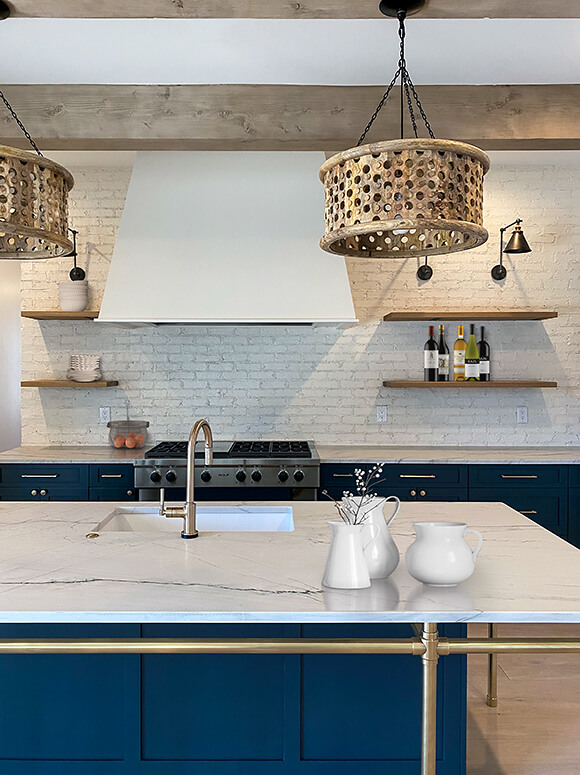Make Your Kitchen Island Attract Attention with Custom Legs For Kitchen Island
Make Your Kitchen Island Attract Attention with Custom Legs For Kitchen Island
Blog Article
Vital Elements to Take Into Consideration When Choosing Legs For Kitchen Area Island
Choosing the proper legs for a kitchen area island includes a mindful evaluation of multiple variables that can considerably influence both functionality and visual appeal. As we explore these aspects, it comes to be clear that each choice can have significant effects for the overall cooking area experience.
Product Options
When choosing legs for a cooking area island, understanding the different product alternatives is vital for attaining both aesthetic appeal and structural integrity (Legs For Kitchen Island). The option of material considerably affects not just the durability of the island however also its general style and capability
Metal legs, commonly made from stainless steel or wrought iron, add a commercial and modern-day feeling while making certain toughness and stability. These materials are immune to use and can support substantial weight, making them perfect for bigger islands.
Another choice is engineered products, like MDF or plywood, which can be more economical while still using a variety of finishes. Nonetheless, they might not offer the exact same degree of security as solid timber or metal. Materials such as acrylic or glass can create a contemporary look, though they might need added support to guarantee stability.
Ultimately, the choice of material for kitchen island legs should straighten with the wanted performance and the total style of the cooking area.
Style and Layout
:max_bytes(150000):strip_icc()/pink-marble-tile_House-of-Harvee-9f030193ae38484a9cb7ea2d71af66f4.jpg)
When taking into consideration design, the form and surface of the legs are vital. Tapered legs can supply a feeling of agility and style, while thicker, extra durable legs can communicate toughness and security. Furthermore, the surface-- be it painted, discolored, or all-natural-- must match the kitchen cabinetry and kitchen counter materials to create a unified look.
Furthermore, the design of the legs can also mirror individual preference. Customized or attractive legs, such as those featuring detailed makings or unique geometric forms, can work as focal factors, including personality and individuality to the kitchen area. Inevitably, the appropriate choice will not only improve capability however additionally raise the visual allure, making the cooking area island a standout function of the home.
Height Considerations
Choosing the appropriate elevation for kitchen area island legs is important, as it directly influences both performance and convenience. The basic elevation for a kitchen area island typically varies from 36 to 42 inches, aligning with usual countertop elevations.

It is likewise necessary to account for individuals' choices and elevations. Customizing the elevation can make sure a comfy experience for all member of the family, making the cooking area island an extra pleasurable and useful room.
Weight Assistance
Ensuring adequate weight assistance for kitchen island legs is important for both safety and security and performance. The kitchen island commonly serves multiple functions, consisting of food preparation, dining, and added storage, requiring a robust support structure. When choosing legs, it is important to consider the total weight capability needed based upon the island's planned usage and the materials that will certainly be put on it.
The selection of product for the legs plays a considerable role in their weight-bearing abilities. Strong wood, metal, and sturdy composites normally give exceptional toughness contrasted to lighter materials. Furthermore, the layout of the legs-- whether they are right, tapered, or have a pedestal form-- can influence their capacity to disperse weight effectively across the linked here framework.
In addition, the leg placement ought to be tactically intended to boost security. Legs positioned at the corners or with a larger base can better sustain larger lots. Constantly consult the producer's specs pertaining to lots restrictions to ensure that the legs can sustain the intended weight without compromising security. In summary, choosing kitchen area island legs with appropriate weight support his response is necessary for developing a secure and useful cooking area.
Installment and Maintenance
Proper installment and upkeep of kitchen area island legs are crucial for ensuring long life and security. To begin, it is important to adhere to the supplier's guidelines throughout installment. This commonly entails safeguarding the legs to the space station making use of ideal fasteners, making sure that the legs are degree and lined up. Using a level tool can aid avoid wobbling and boost the general aesthetic charm of the kitchen island.
As soon as set up, normal maintenance is needed to preserve the stability and look of the legs - Legs For Kitchen Island. For wooden legs, regular cleansing with a damp fabric and application of ideal wood gloss can protect against wetness damages and keep their finish. Steel description legs might require a gentle cleansing remedy to remove oil and crud, followed by a dry fabric to stop rust formation
Additionally, examine the legs consistently for signs of wear or damage, such as cracks or loose joints. Tightening screws or bolts as needed can also prolong the lifespan of the legs. By adhering to these installation and maintenance practices, property owners can guarantee that their kitchen island stays durable and aesthetically appealing for several years ahead.
Final Thought

Aesthetic coherence is vital in picking the style and design of legs for a kitchen area island, as these elements substantially affect the total setting of the space. Tapered legs can provide a sense of lightness and style, while thicker, much more robust legs can communicate toughness and stability.Picking the ideal elevation for kitchen area island legs is critical, as it directly impacts both capability and convenience. In recap, selecting cooking area island legs with ample weight assistance is vital for producing a secure and practical cooking room.
In conclusion, picking legs for a kitchen island demands mindful consideration of various elements, consisting of material choices, design, height, weight assistance, and setup.
Report this page